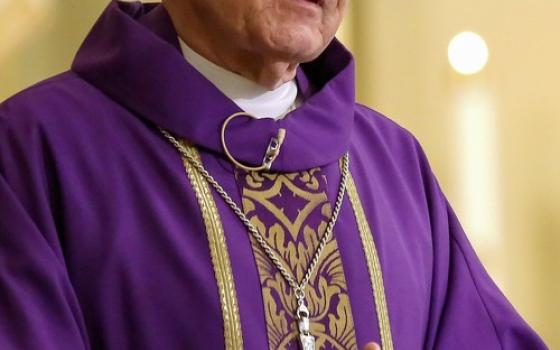The sisters prepared us well. On the day of days we dressed all in white – shoes, socks, underwear, pants, shirt, even a white belt. “Don’t let it touch your teeth,” Sr. Agatha Irene warned, “and if, God forbid, you get sick, vomit, the priests know what to do. And remember only he can touch the host with his consecrated hands!”
Just before the priest’s fingers deposited the wafer on my outstretched tongue, I recall I trembled. How could I accommodate this presence in the same mouth that filled with sugary grape Kool-Aid in the summer, spongy Twinkies on school day afternoons? Into that familiar orifice came the same bread that dwelt in the silent, golden tabernacle with the ornate candle perpetually burning before it. That object of adoration, somehow transmuted into the substance of the very shaper and crafter of the seas and skies, the Love that moves the sun and stars, melted on my fluttering tongue.
Decades before the adjective “awesome” became common currency, First Communion, a contact with something truly holy, was a momentous, goose-bump-producing event. Someone once quipped that it was not as difficult to believe those processed, perfectly thin wafers were actually the body of God as it was to believe they were bread. But we children knew, beyond doubt, that something “holy” entered our bodies. The priest was holy, as was that sanctuary enclosed by the communion rail. At that rail a papery particle of holiness dropped on our tongues, light as a gossamer butterfly, heavy with awe and mystery.
Yet the locus and range of what we call holy have changed in my own lifetime.
At a pastoral ministry gathering I attended years ago, the keynote speaker showed three slides on the large screen behind him. The first depicted the pre-Vatican II Catholic church with the communion rail around the priest and the altar. The second showed a church in Chicago where that rail had been put around the front of the building, symbolizing that the gathered assembly was within the provenance of the holy. The third showed the work of a computer graphics whiz who put the rail around the whole planet. When this appeared on the screen, there was loud applause.
As it sinks in slowly that Earth’s life support systems are gravely threatened, we open to the idea that Earth is truly God’s body, and, because of that, a place where the sacred resides. It’s no small matter locating the holy. Everything depends on it.
Philosophers of religion have long pondered the phenomenon of the holy, this key element of the human religious experience. All world religions describe it and name it: the shekinah, atman, the Tao, the divine presence, the numinous.
A pioneer in the study of the holy was the German philosopher Rudolf Otto (1869-1937). In his landmark book, The Idea of the Holy (1923), Otto defined it as the wholly other, a tremendous and fascinating mystery that dwells in our midst. The holy provokes terror because it presents itself as an overwhelming power, yet it also fascinates because it seems merciful, gracious, loving. Some qualities of the holy: amazing, astonishing, exciting, uncanny, ravishing, surprising, forceful, majestic, powerful, mysterious. Meeting up with the holy is always a strange harmony of contrasts; we are both daunted and enthralled. Such encounters are emotional experiences before they are theological ones.
An encounter with the truly holy knocks us for a loop, bedazzles us so that we behave differently -- maybe forgive our worst enemy or sell all and give it to the poor.
Novelist and essayist Annie Dillard points out that, when the ancient Jewish high priest entered the Holy of Holies on the Day of Atonement, assistants tied a rope to his leg so they could haul him out in case he was struck senseless by the holy. She suggests that people in church shouldn’t wear bonnets on Sunday but crash helmets. And she proclaims:
"There is no less holiness at this time than there was the day the Red Sea parted … . There is no whit less enlightenment under the tree by your street than there was under the Buddha’s bo tree. … In any instant, the sacred may wipe you with its finger, in any instant the bush may flare, your feet may rise, or you may see a bunch of souls in a tree. In any instant you may avail yourself of the power to love your enemies… The time of the holy is always now.”



